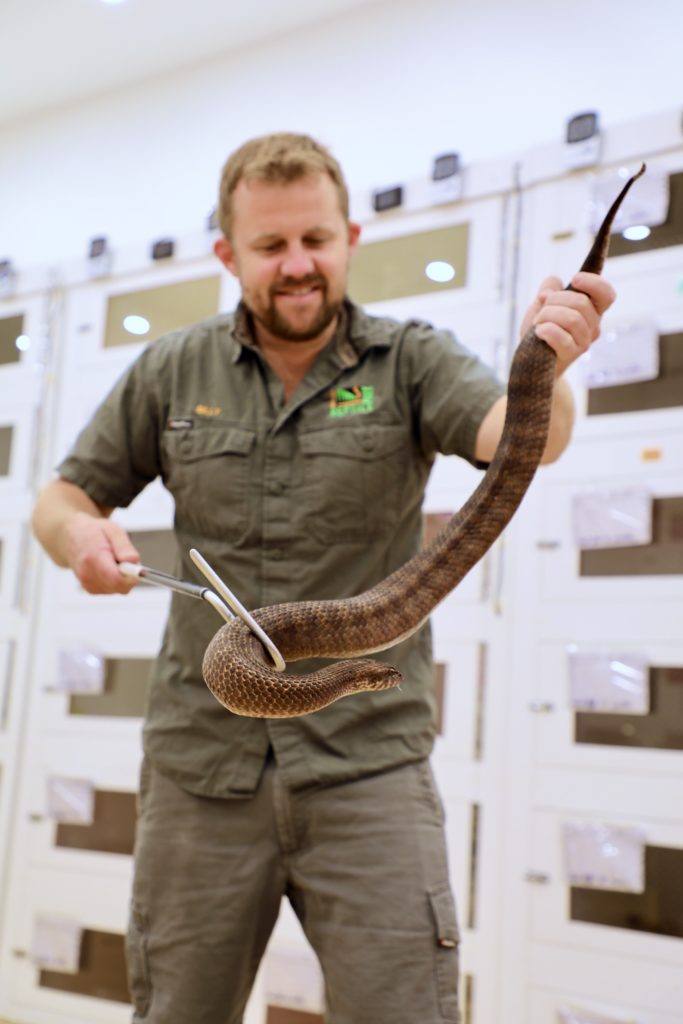With February being prime hatching season for the summer eggs of red bellied black snakes and death adders, the Australian Reptile Park is urging all Central Coast residents to be on the alert for increased snake activity.
The Park’s snake expert Billy Collett said snake season on the east coast lasts traditionally from late Spring through Summer, easing off only when the weather begins to cool as Autumn gets underway.
“The snakes start coming out of the winter months looking for food and breeding sites and we see the eggs hatching through February and March,” he said.
“Of course, activity is also weather dependent and the hotter periods we have been experiencing will see the snakes moving around more, looking for food, shelter and water.
“The big rain events also get the snakes moving as they look for places to dry off and get warm.”
Collett said home backyards were often a mecca for snakes, particularly if they back onto or are near bushland.
But even more urban settings can become “snake hotels”, with Collett warning residents to keep lawns mowed and rubbish piles at bay.
“If you have piles of rubbish they will attract rodents and the rodents will attract the snakes,” he said.
“It is also important to ensure your doors and windows – especially roller garage doors – are secure with no gaps- and that includes fireplaces.
“Retaining walls are also often attractive to snakes – there are always little gaps and rodents often burrow near them – and hedges and long grasses can attract them too, along with hollow logs and large rocks with gaps underneath them.”

Collett said it was important for all residents to be up to date on snake bite first aid, with demonstrations available on the Park’s website.
“Basically, the best thing to do is to apply a pressure bandage over the bite site, winding around it three times and then up the limb,” he said.
Victims should be taken to hospital immediately once a pressure bandage is applied and residents should resist the urge to try to identify the snake.
“On the Central Coast the most commonly seen snakes are diamond pythons, tree snakes, marsh snakes and red bellied black snakes,” he said.
“Any venomous snake is dangerous and if people spot one they should immediately call a snake catcher or wildlife group.”
“The main message is – if you see a snake, leave it alone and call a professional.
“Children should be instructed not to go anywhere near a snake but to call the closest adult if they see one.”
Collett said snake activity usually abated through March and April as things cool down.
“Once again, this depends largely on the weather,” he said.
“If things cool down suddenly we might see snake activity drop off sooner but usually by Easter we are seeing activity die right down.”
Terry Collins


